1.5- Murlo and its Historic Parish Churches
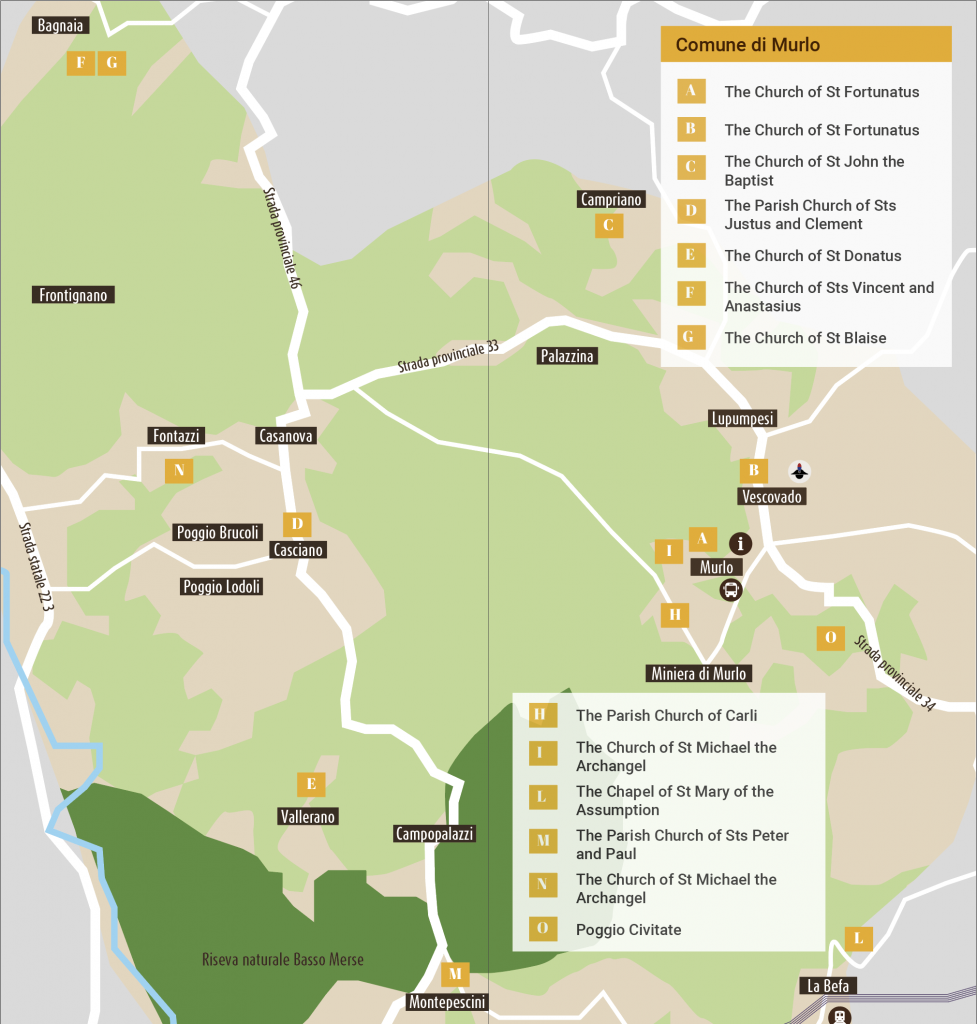
Known all over the world for its Etruscan origins, the town of Murlo actually boasts origins that go back much further, as recent archaeological excavations testify. It has even been suggested that the Etruscans did not migrate to these areas, but rather originated here. The story of Murlo begins a long time ago: the stones of its streets, its buildings, and its inhabitants all carry the traces of a past that is distant yet present. Visitors can find numerous churches throughout this area: many of these can still be visited today, while others now stand in ruins. Our journey begins in Murlo, a small village that has the appearance of an historic fortified centre with houses built on the circuit of the old walls. These old walls have two entrance gates, one of which is original and features a stone arch.
The Church of St Fortunatus
Following Via Tonda, a road that runs right through the heart of Murlo, we find ourselves in front of the Church of St Fortunatus, which was a cathedral until 1778. The Bishop of Siena carried out religious rites here when he stayed in the nearby palace. What we see today is not the original construction from the 12th century, but rather a rebuild dating back to the 16th century. On the façade, which was intended to be triangular in shape, following the profile of the three naves, visitors can observe the original entry arch; the window and other parts are later additions. During the restoration works that took place at the end of the 16th century, following the damage that took place during the War of Siena, the entire apse was enlarged and reduced to a single nave. The two altars of the transept were erected during the 17th century in stucco to imitate the appearance of polychromatic marble, featuring paintings by Astolfo Petrazzi (Sts Blaise, Dominic, Catherine of Siena and Sebastian in Adoration of the Madonna and Child) and Dionisio Montorselli (The Assumption with Saint Blaise and a Holy Bishop). The baptismal font also dates back to the end of the 17th century, although an older fifteenth century font has been discovered in the basin, featuring sculpted garlands and a band decorated with foliage and the Bernadinian monogram. The two holy water fonts, displaying exquisite workmanship and dating back to the 14th and 16th centuries respectively, are also of note.

The Church of St Fortunatus
Leaving behind Murlo, let us head along the Sp34 for 1.4km by car, motorbike or even bike, and we will soon reach the small town of Vescovado di Murlo. The Church of St Fortunatus can be found right at its centre. Built during the early 1970s in place of a previous building, it was consecrated in 1972. Inside, visitors can admire a triptych by Benvenuto di Giovanni, entitled The Madonna Enthroned with Child and Saints (1475). Of the historic furnishings, only a processional structure from the 18th century, made of painted and gilded wood, has been preserved. It was built to carry Andrea di Niccolò’s panel depicting the Madonna and Child during processions, and was part of a larger work: its two accompanying side panels were sold abroad at the start of the 20th century, and the lower section was removed. The central part is an object of great devotion.
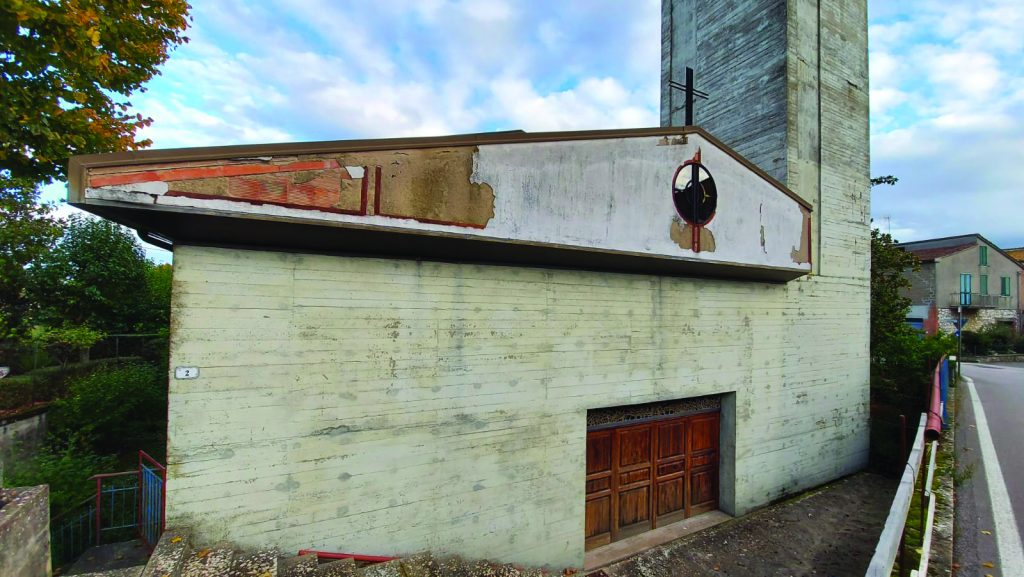
The Church of St John the Baptist
From Vescovado, our route continues towards Campriano along the SP 34/b/provincial road 34/b of Murlo. After a short journey of 4.4km, we find ourselves before the Church of the Beheading of St John, which, over the years, came under the patronage of many aristocratic Sienese families, from the Tolomei family to the de Vecchi family. A significant proportion of the church’s oldest structures has been conserved. Inside, the altar to the left preserves wall paintings dating back to the end of the 16th century. These paintings by Ventura Salimbeni showcase the fresh narrative tones of the artist – especially in the natural postures of the female figures, rendered with quick and lively brushstrokes. The church was also originally home to a painting of The Madonna and Child by Pietro Lorenzetti, which is today housed in the Museum of Sacred Art in Val d’Arbia, near Buonconvento.
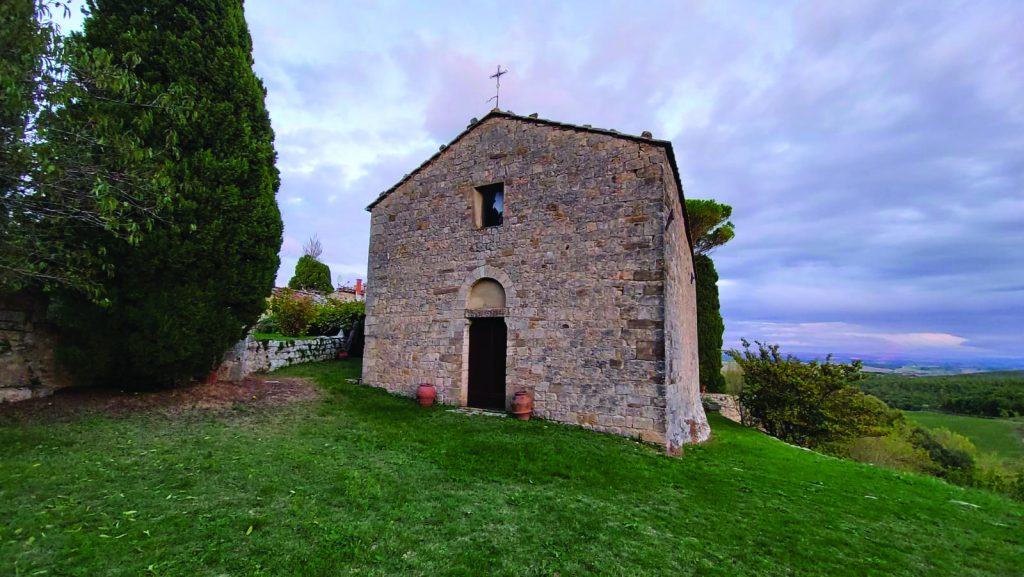
The Parish Church of Sts Justus and Clement
Let us resume our journey and head along the Sp33 towards Casciano di Murlo, which we will reach after 10km. Here, the Parish Church of Sts Justus and Clement is well worth a visit. This sacred building once housed a women’s monastery dedicated to St Justus. Suppressed in 1463, its church was endowed with the status of Parish Church of Murlo. The building that can be visited today, with a floor plan in the shape of a Latin cross with a single nave, features a protruding transept and a scarsella at its end. The building is devoid of decorative features, with the exception of the window on the façade, which is embellished with an archivolt bearing a dichromatic motif.

The Church of St Donatus
It’s time to resume our journey along the Vallerano municipal road. Here, we find the Church of St Donatus in Vallerano, which is today in ruins and under private ownership. This area was once the home of the fortified castle of Vallerano, which was probably Roman in origin. The church and surrounding land belonged to the canons of the Cathedral of Siena until the 14th century. From the 16th century the church had its own rector, and from 1598 was under the vicariate of Murlo. In more modern times, the church suffered progressive decay due to the abandonment of the village by its inhabitants, which had already begun by the end of the 19th century, until its recent alienation. When the faithful were greater in number, many liturgical ceremonies took place here, from the feast of the patron saint on 7 August to the so called feast of spring time water, which paid particular devotion to the relic of the arm.

The Church of Sts Vincent and Anastasius
Let us return to Casciano to resume our route towards Bagnaia, where we can visit the Church of Sts Vincent and Anastasius, whose presence was documented in the 12th century. The church has a simple profile typical of the Romanesque period, with a gabled roof, a gate surmounted by a round arch, and a wall face made of large blocks of tuff masonry featuring a single light window decorated with two colonnettes. The interior, with a single nave, features three altars: the largest, in white stucco, concludes with two adoring angels at the sides; the altar to the left features an eighteenth century painting of The Death of St Joseph; and the altar on the right has a sixteenth century image of The Madonna and Child. This latter image is housed within a carved and gilded tabernacle that was an object of veneration for the local population, as can be seen from the many ex votos hanging from the walls. Note the two holy water fonts, one dating back to the 16th century and the other to the 18th century.

The Church of St Blaise
Travelling just over one kilometre, we find ourselves in the village of Filetta, where the Church of St Blaise can be visited. In was built during the 19th century to replace an older church that was demolished in the 18th century due to its state of extreme decay. Its materials were used to construct the new place of worship that can be seen today. The new structure is a simple chapel with a single hall, external plastered walls, and a small bell gable that surmounts the roof. The church once housed a triptych by Luca di Tommé depicting The Mystical Marriage of St Catherine of Alexandria with Sts Blaise and Bartholomew, which is now displayed in the Val d’Arbia Museum of Sacred Art in Buonconvento.

The Parish Church of Carli
Returning to Murlo and following the Miniera municipal road for 2km, we arrive at the Parish Church of Carli. Known as the old parish church to differentiate it from that of St Fortunatus, for a long time it was a site of devotion due its image of The Madonna and Child by Andrea di Niccolò. Today, the panel is displayed in the Church of Vescovado, but it lacks the two saints at the side and a large part of the central panel. A complex wooden processional structure, carved during the 18th century, bears testimony to its veneration by the local population, as it was once used to carry the painting throughout the surrounding countryside. Before the building stands an atrium featuring three brick arches; inside, the interior preserves three eighteenth century altars in white stucco, decorated with sculptures by Arrighetti.
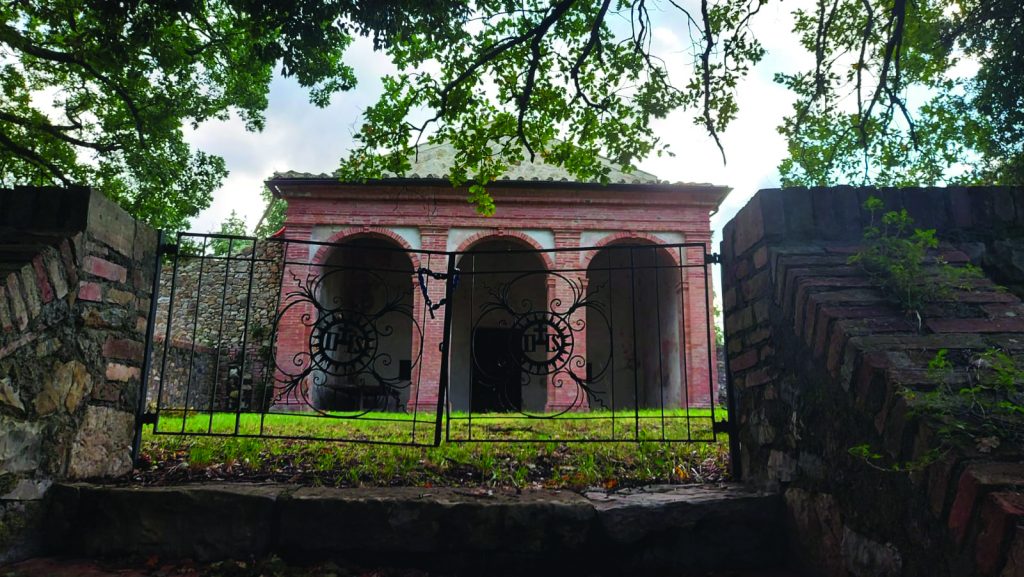
The Church of St Michael the Archangel
Returning once again to Murlo and taking the SP34/c and Via di Montepertuso, after approximately 6 km we reach the Church of St Michaelthe Archangel. The first mention of this church dates back to 1214. In 1475 it was embellished with a triptych depicting St Michael and other saints by Benvenuto di Giovanni, which was then relocated to the Parish Church of Vescovado and replaced with a copy. The church was completely restored at the start of the 20th century in a neo Gothic style: inside, three altars were built using grey sandstone (known as pietra serena), with a lavish marble tabernacle on the high altar. The church enjoyed a remarkable period of recovery due to the activity of the organisation known as “Comunità Mondo Nuovo”, which founded one of its centres here. The organisation committed to a continuous restoration of the architectural structure, which concluded with the reinstatement of both the building of worship and its annexes in 1997. The church was adorned with a new tabernacle sculpted by Chiara Tambani (1997).

The Chapel of St Mary of the Assumption
If we continue along Via di Montepertuso for 1.8km, we arrive in La Befa, where we can visit the small Chapel of St Mary of the Assumption. Throughout the course of the 18th century, the chapel was the seat of the Compagnia dei Celesti, which oversaw its preservation. The date of construction of this small chapel is uncertain, but the presence of a triptych of the Sienese school from the 15th century indicates that the building may already have been in place by this time. The triptych was purchased by the state in 1972, and is now housed in the National Gallery of Siena. This fifteenth century painting can be traced back to the artistic circle surrounding the artist Vecchietta.
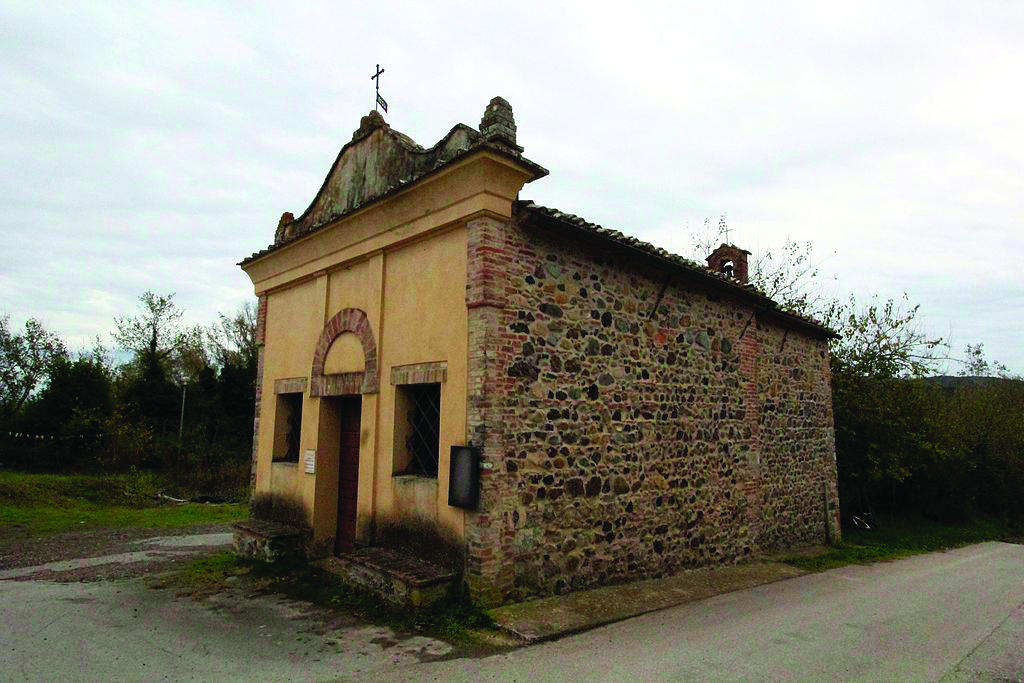
The Parish Church of Sts Peter and Paul
Recommencing our journey along the Maremmana road, after almost 8km we reach Montepescini, where the Parish Church of Sts Peter and Paul awaits us. Its origin probably dates back to the 11th century, but the first mention of the church is documented in the following century. Renovated in the 17th century, signs of its Romanesque origin can be seen in its façade, with a gabled roof and wall face made of large blocks of stone punctuated with rows of bricks. It suffered extensive damage during the passage of the Pisan troops in 1332 and was further damaged at the end of the 14th century by Florentine troops. The passage of the imperial army in 1554 also failed to leave it unscathed. Despite this, the church underwent continuous restoration works that preserved its structure. Its Baroque altars, featuring scrolls and ovals in white stucco, house a seventeenth century altarpiece, a copy of a panel created by the painter known as Il Sodom, featuring two saints.
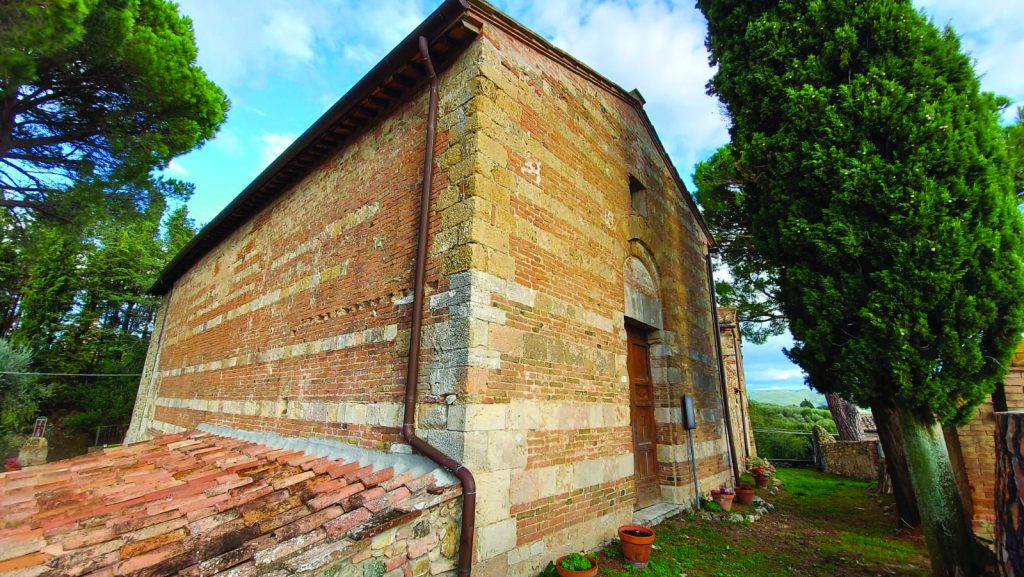
The Church of St Michael the Archangel
It’s time to take to the road once again for our final stop, which takes us along the Sp33 for 9km to reach the town of Formignano. Here, we can visit the Church of St Michael the Archangel, considered to be the parish of the vanished village of Formignano. During the 19th century, when the local population had been reduced to just four families, it became a simple oratory. The church occupies an isolated position in the middle of a forest. In the apse area, it preserves its original architectural structure, made of rows of limestone. In the apse itself, which concludes with a band that juts out to support the roof, there is a single light window. The Roman gate, featuring an overhanging arch, also survives; only the original architrave has been replaced with a brick cornice.

Poggio Civitate
At the end of our religious journey, Poggio Civitate, situated to the south east of Murlo, is well worth a visit as the location of an Etruscan settlement. The discovery of this archaeological site was due to the intuition and curiosity of Ranuccio Bianchi Bandinelli, who believed that an important settlement might exist in the area on the basis of sporadic archaeological finds that had come to light. And so a building full of decorative acroteria was uncovered. The structure was destroyed by a fire around 600 B.C., but was rebuilt shortly afterwards. The majority of the most interesting finds were discovered beneath the layer of materials that collapsed due to the fire, and indicate that the inhabitants were more concerned about escaping than saving their belongings. Around 580 B.C., the residence was rebuilt on top of the rubble of the collapsed building, but boasted more impressive dimensions: 18 rooms were built overlooking an internal courtyard with a portico on three sides. On the fourth side, there was a temple. Outside the building, there was a structure that was used as a construction yard/workshop, where various artisans worked with ceramics, gold, ivory, bone, and bronze. Each time you dive into the distant history of this region, you will embark upon a new journey of discovery. Let yourself be seduced by the stories – perhaps legends – that help to keep Murlo’s past alive.
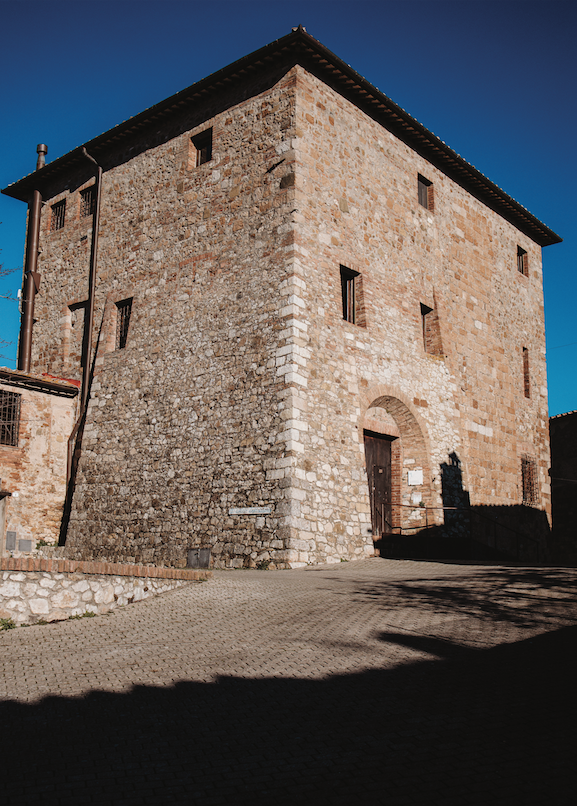
Brochure edited by Toscanalibri.it
Texts edited by Susanna Danisi
Editorial coordination: Elisa Boniello and Laura Modafferi
Photos: Primamedia, Sabrina Lauriston e Leonardo Castelli
Graphic design: Michela Bracciali
